2024 KOSHA Makes first visit to COAPRE
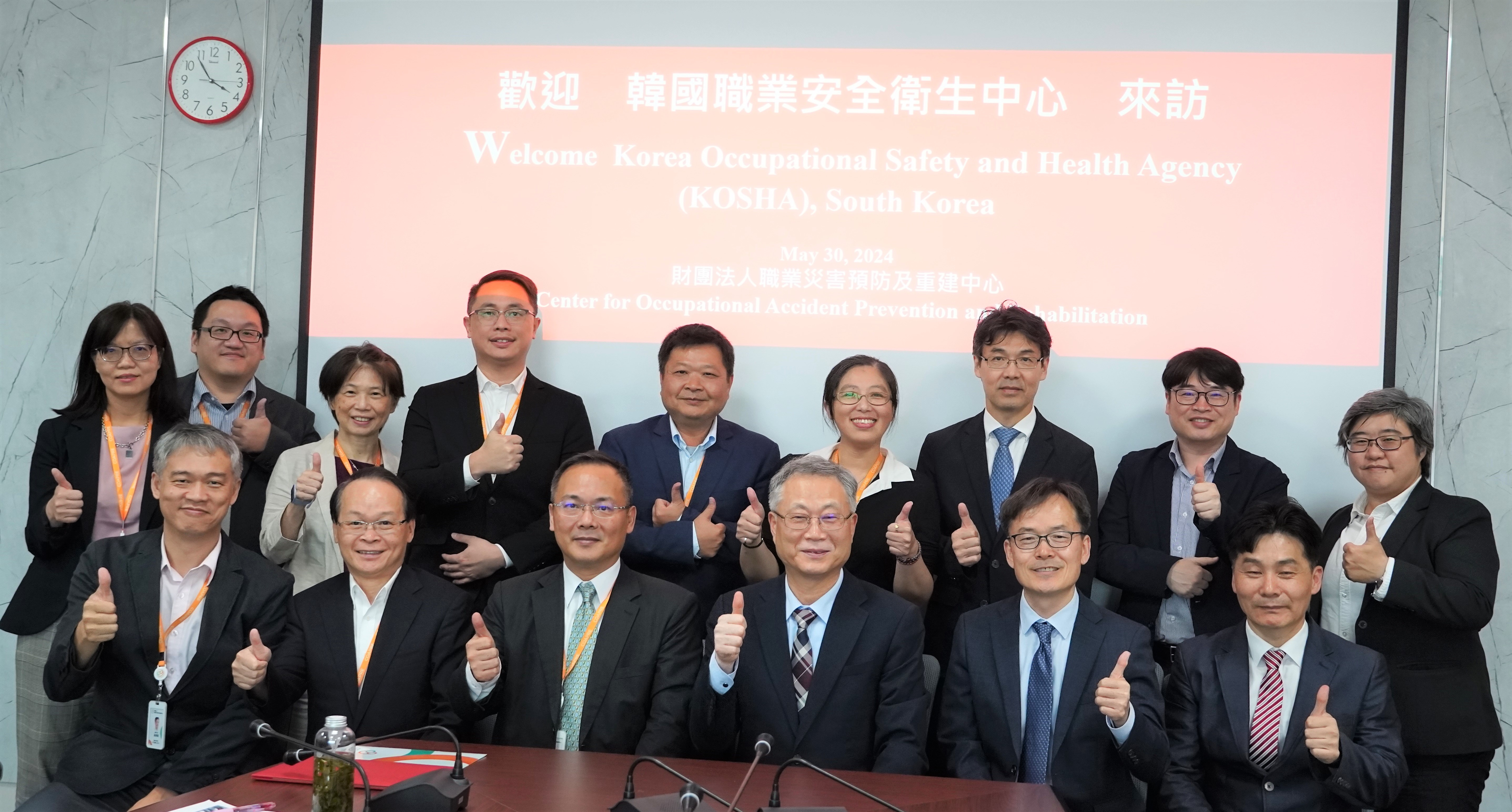
KOSHA President (center front) leads delegation to visit COAPRE
KOSHA, established in 1987, is a public non-profit organization dedicated to preventing occupational accidents. Its primary mission is to protect workers' lives and enhance their safety and health. KOSHA's work is independent of policymaking, regulations, and governmental authority, focusing on education, training, technical assistance, certification, and advocacy. It also conducts occupational disease investigations and monitoring upon the request of the Ministry of Labor. The COAPRE's CEO, Ho Jiune-Jye, praised KOSHA as a leading model in the field of occupational safety and health in Asia, recognized internationally for its achievements. He emphasized that the exchange between the two organizations is highly valuable, noting that their similar organizational structures and shared experiences will significantly contribute to the COAPRE's growth and development.
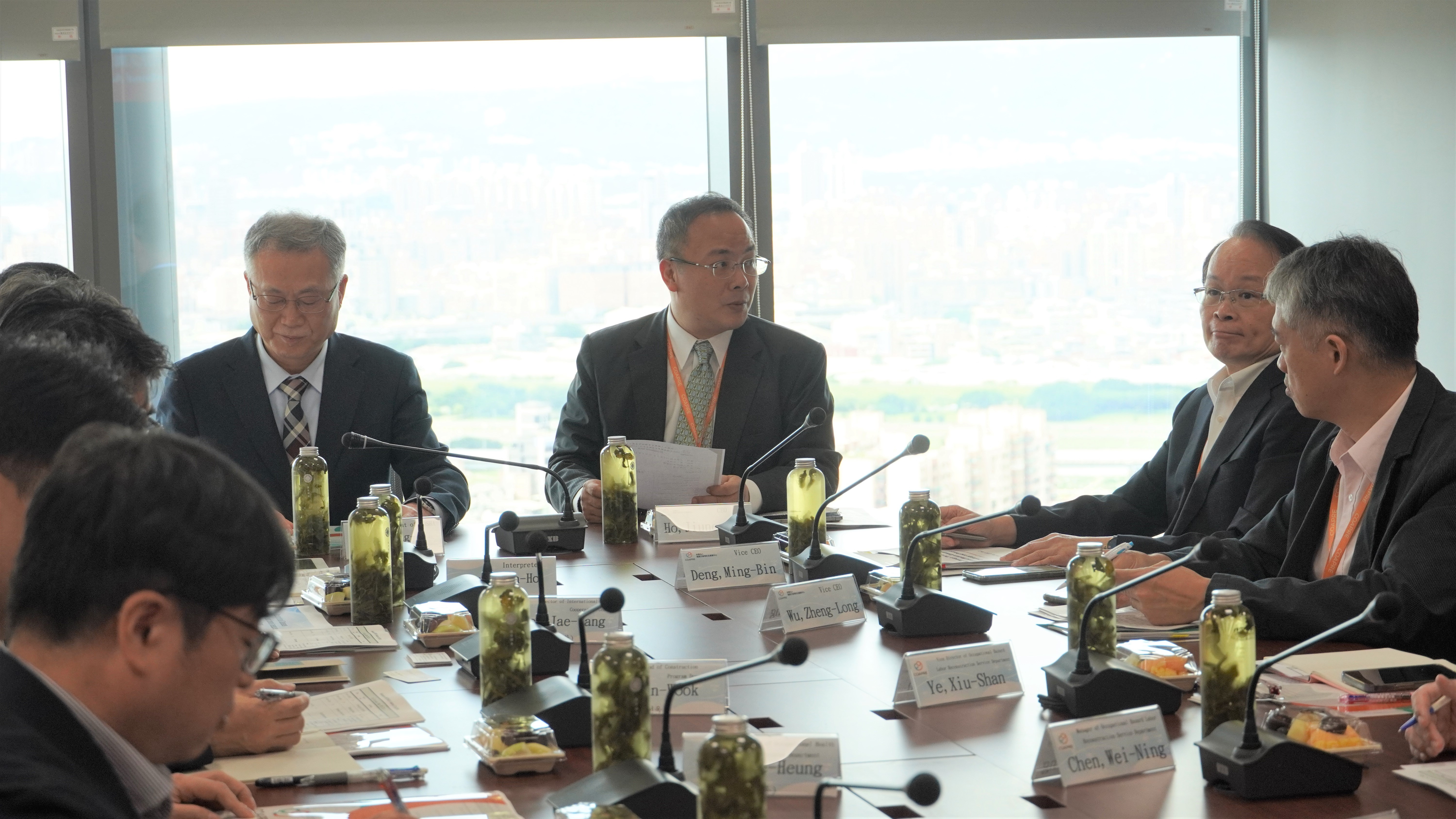
KOSHA focuses on occupational health in Taiwan's SMEs and semiconductor industry
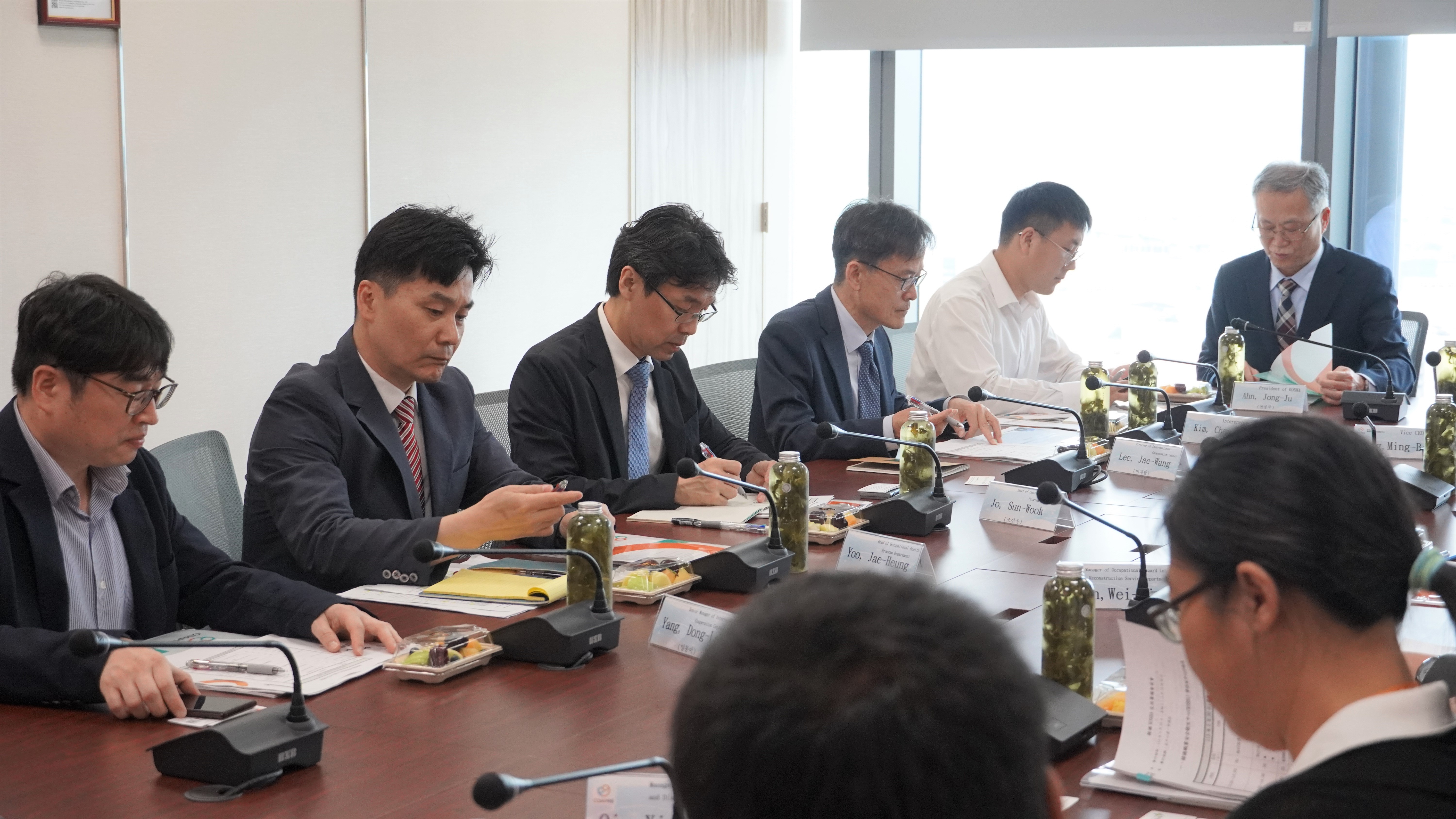
KOSHA finds higher incidence of cancer in the electronics industry compared to other sectors
Cancer incidence in South Korea's electronics industry is 3.3 times higher than in manufacturing
During KOSHA's presentation, it was noted that in September 2017, South Korea revised its criteria for recognizing occupational diseases, adopting a presumptive principle and expanding the guidelines for chronic illnesses. As a result, the number of cases recognized for occupational disease compensation has steadily increased each year, rising from 7,627 cases in 2013 to 11,473 cases in 2018, and reaching 23,134 cases in 2022. Significant growth was observed in cases related to musculoskeletal disorders and mental health conditions, with the former increasing by 77.9% from 2018 to 2022, while the latter, including conditions like depression, bipolar disorder, and PTSD, surged by 120.4%.Additionally, the incidence of workplace-related cancers increased by 123.8%, drawing particular attention due to the findings that cancer rates in the electronics industry are 3.3 times higher than in the manufacturing sector and continue to show an upward trend.
Focus on PTSD: South Korea Establishes Occupational Trauma Counseling Centers
KOSHA's presentation also highlighted that, according to the South Korean government's plans, the workforce in the electronics industry is expected to grow. To address the rising incidence of occupational diseases, as well as the emerging workplace threats caused by extreme weather conditions and changes in industry structures, KOSHA has introduced several preventive strategies:1. KOSHA is providing subsidies to small and medium-sized enterprises for environmental monitoring and specialized health examinations to reduce occupational health risks.
2. In collaboration with general hospitals, KOSHA is establishing Occupational Disease Centers. These centers offer free hospitalization for patients suspected of having occupational diseases. This initiative aims to facilitate early detection of occupational diseases, prevent further harm, and build a robust support system for monitoring and investigating these conditions.
3. KOSHA has also established regional “Health Centers” staffed with healthcare professionals and occupational health specialists to provide the public with medical care and workplace health consultations. Furthermore, dedicated occupational trauma counseling centers have been set up within these health centers to offer support for issues related to workplace trauma, such as major industrial accidents, colleague suicides, sexual harassment, or sexual violence.
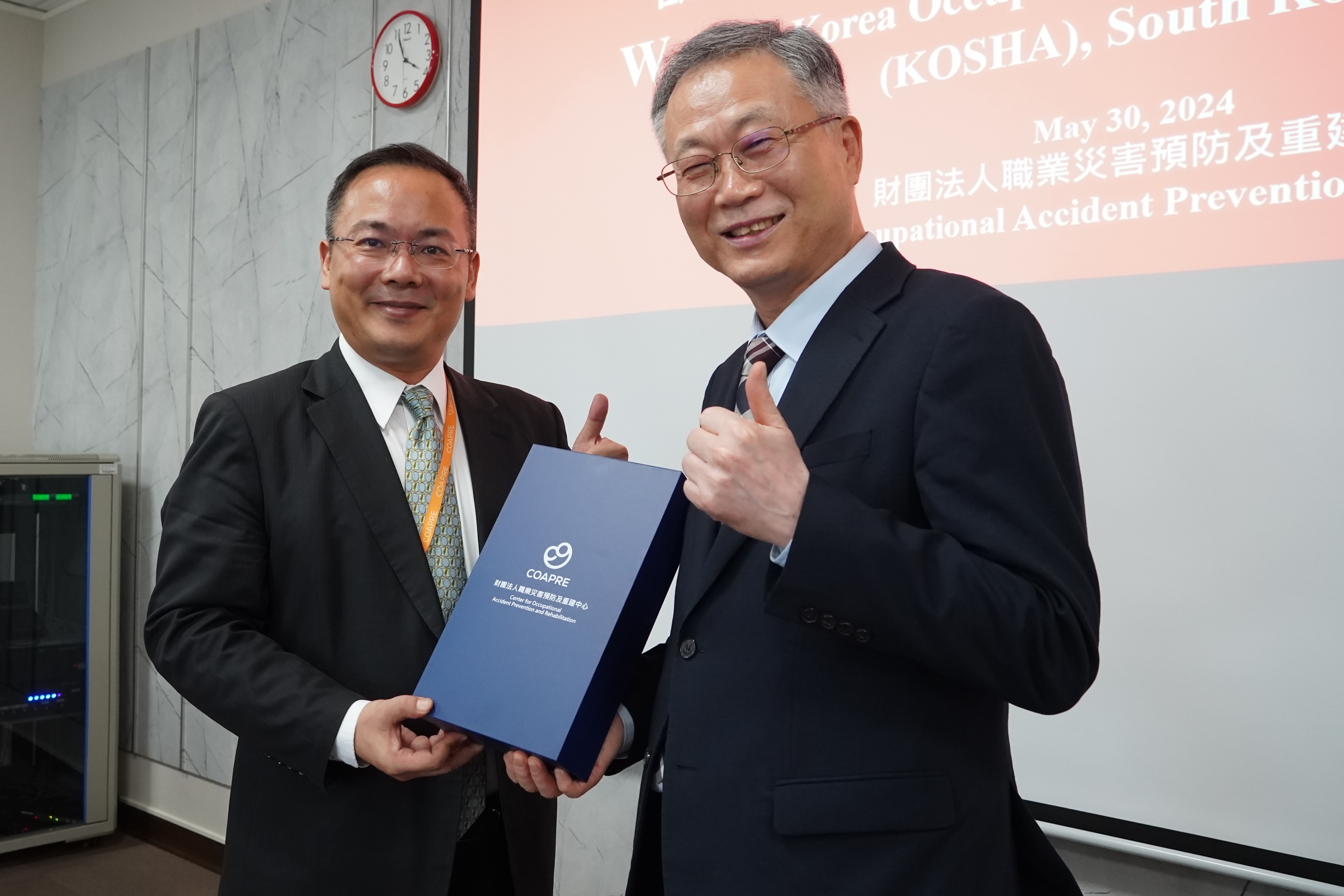
Ho Jiune-jye highlights the importance of learning from South Korea's focus on psychological occupational diseases
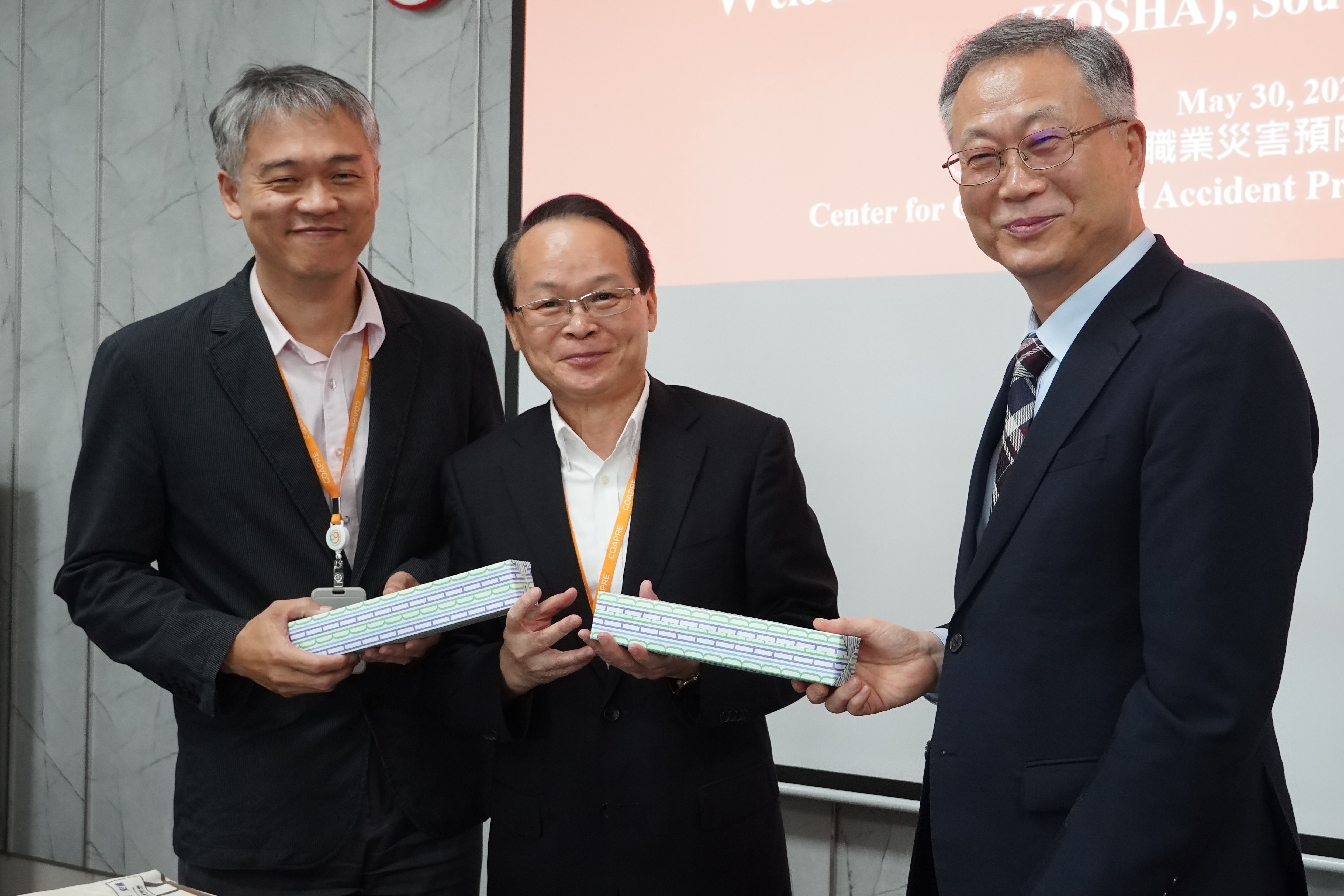
COAPRE Deputy CEO (second from left) expresses gratitude for South Korea's valuable insights
Six new cases of engineered stone-related illnesses discovered in Taiwan; KOSHA shares strict penalties to facilitate improvement
Ho further noted that musculoskeletal disorders are the most common occupational diseases in Taiwan, whereas psychological occupational diseases are relatively underdiagnosed. He emphasized that Taiwan should learn from South Korea's approach to addressing psychological health issues in the workplace. Recently, occupational health and safety in Taiwan has focused on the engineered stone industry, where workers exposed to silica dust have developed silicosis. The latest reports from Taiwan's notification system identified six new cases of silicosis, with an average age of diagnosis at 35.8 years, which is significantly younger than the average age of 66.1 for silicosis cases in other industries. Notably, these workers developed the condition in less than 10 years of exposure. In response, COAPRE is fully engaged in assisting these workers with health check-ups and aims to develop a comprehensive intervention model to reduce the incidence of occupational diseases.Ho Jiune-Jye also pointed out that there are many challenges to overcome in occupational disease prevention in Taiwan, with the greatest difficulty being the lack of accessible evidence. Although regulations require companies to regularly sample and analyze hazardous substances in the workplace, most data in the existing database appear to meet safety standards, with few abnormal results reported. Ho suggested that this could be due to testing agencies aligning their findings with the company’s expectations to secure future contracts, thus avoiding reporting discrepancies.
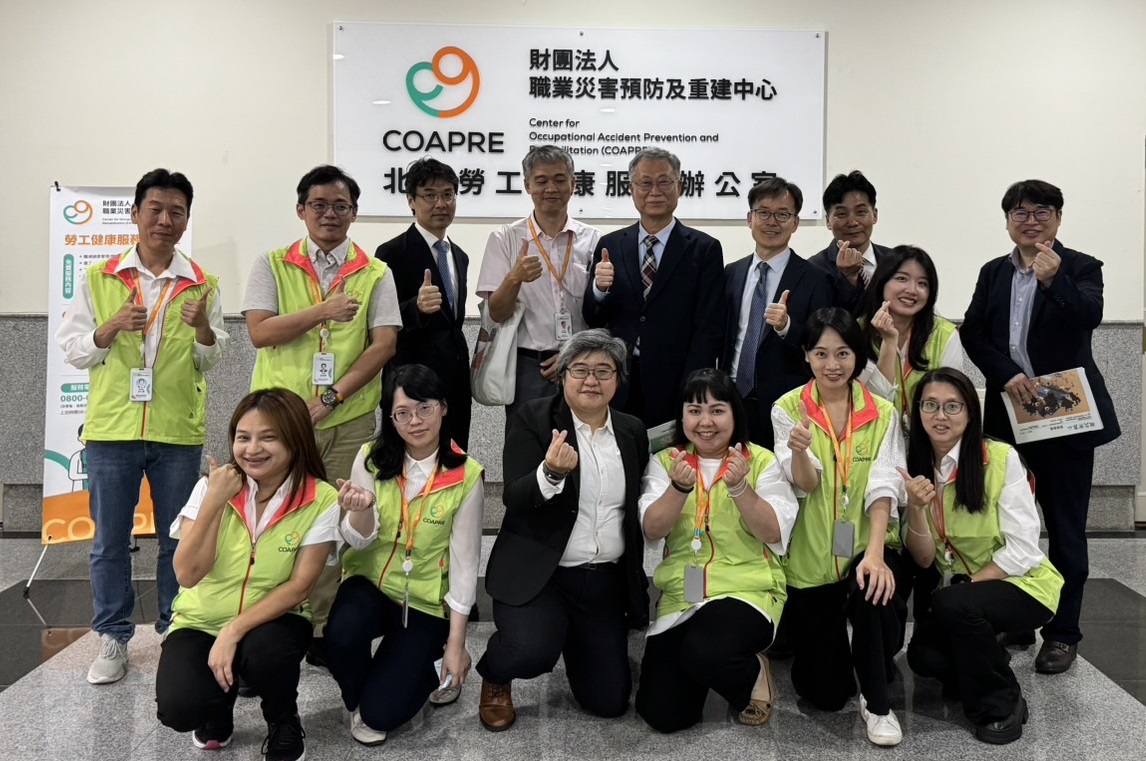
KOSHA shares insights on stringent regulations and improvement measures
Since January, the COAPRE has taken on the responsibilities of the Labor Health Service Office, functioning similarly to KOSHA's "Health Centers." These centers provide frontline health information and basic health assessments for workers. The COAPRE invited KOSHA to visit its Northern Region Labor Health Service Office, where the delegation experienced evaluations using the "handgrip dynamometer" to assess upper limb strength and the "back muscle dynamometer" for analyzing lifting posture.
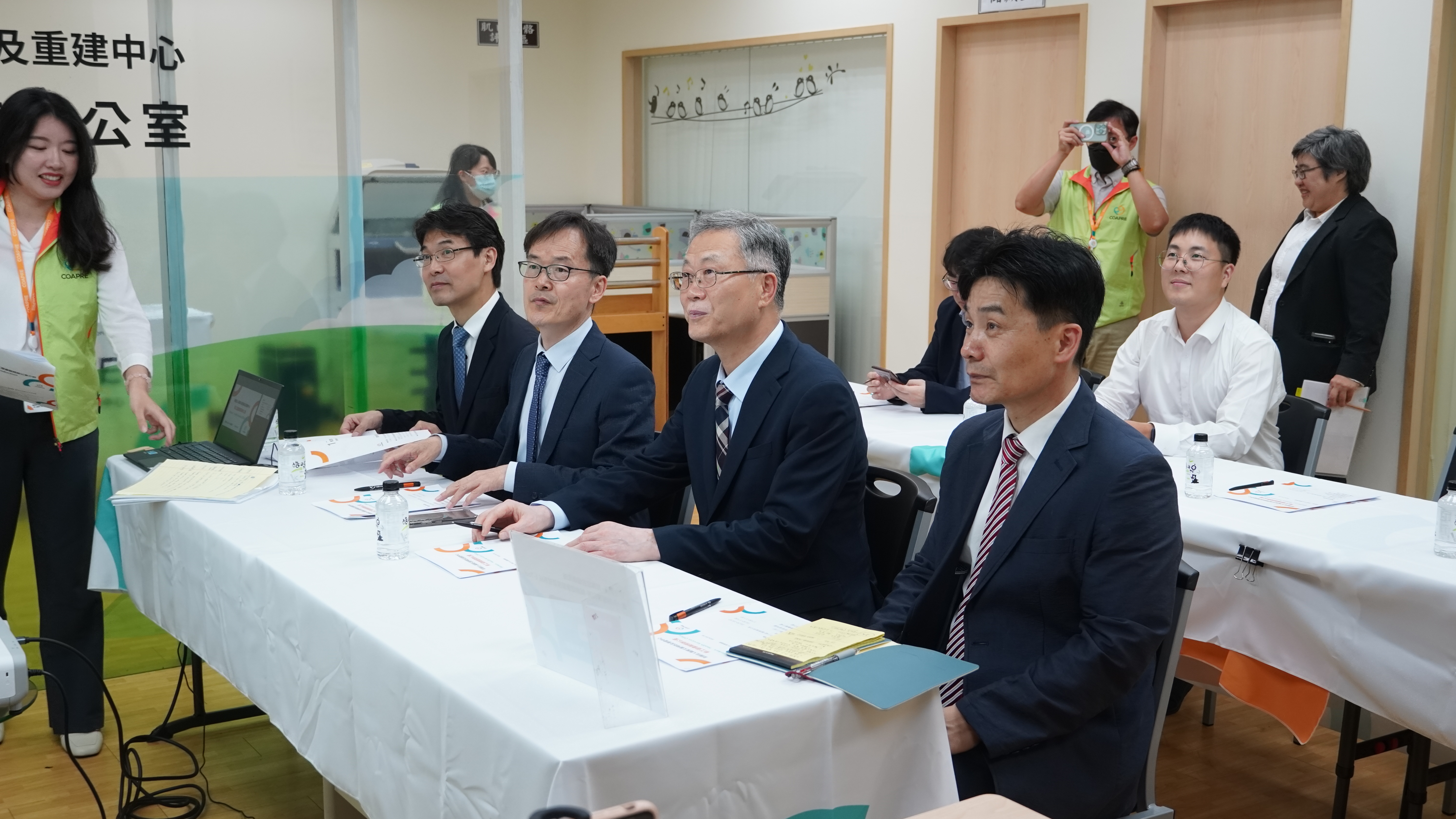
Experiencing the workplace health services management system (weCare)
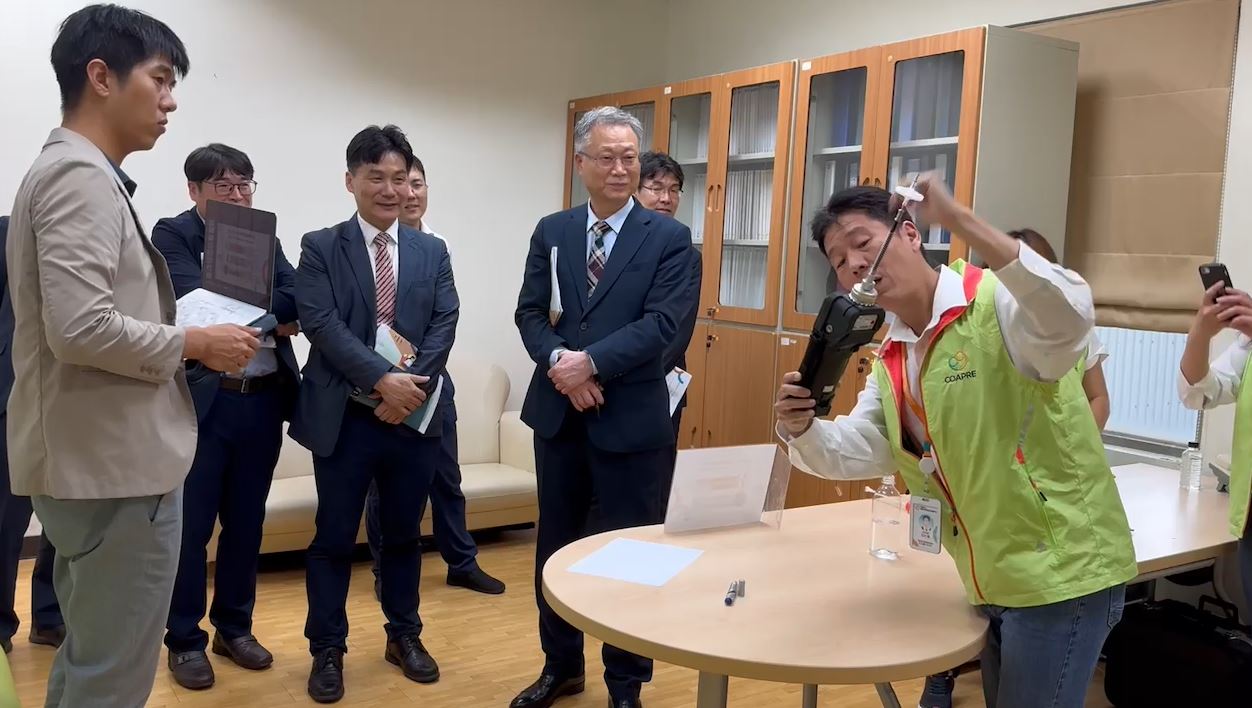
Demonstration of VOC gas detectors for workplace chemical monitoring
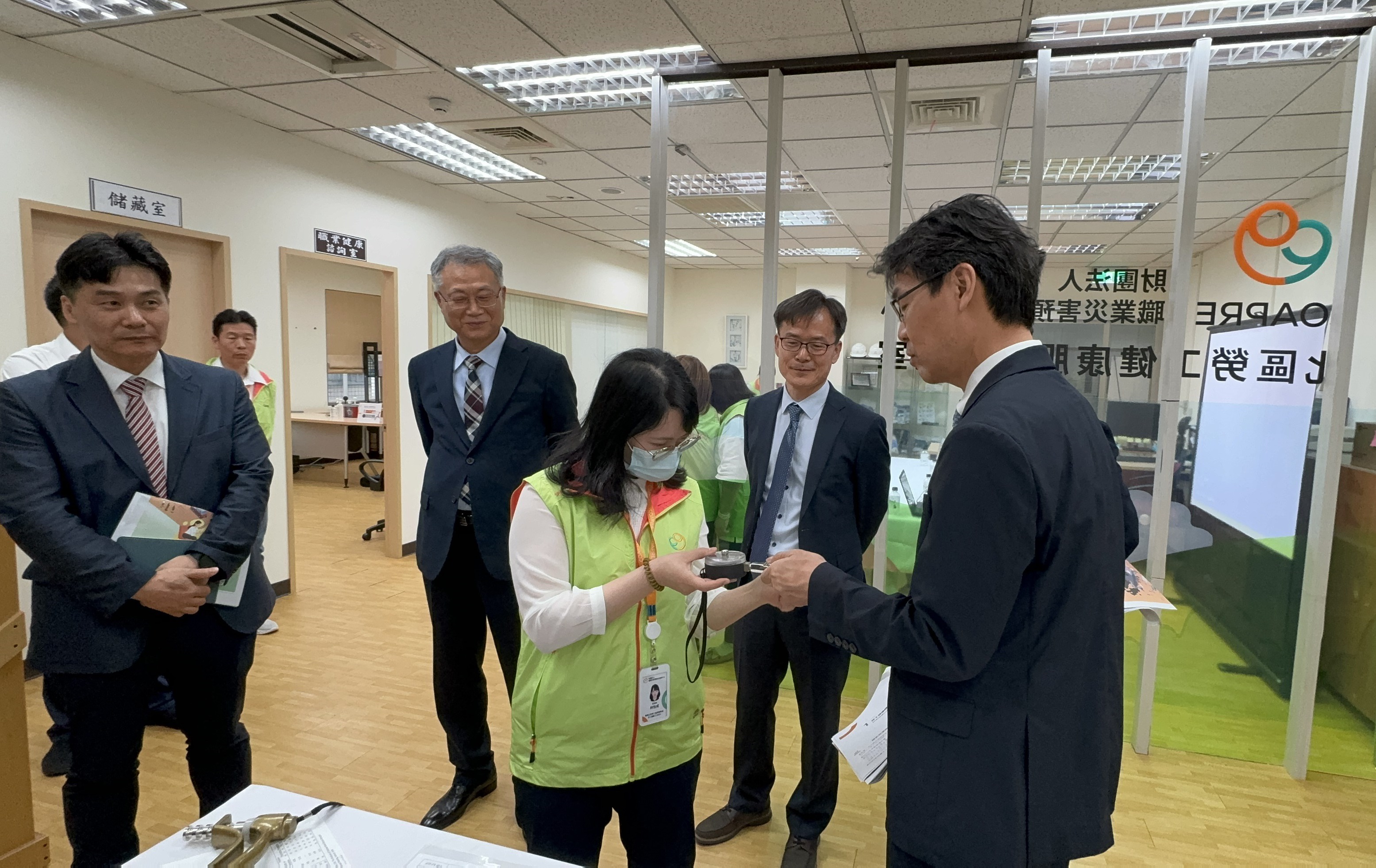
Measurement of finger strength using the finger dynamometer
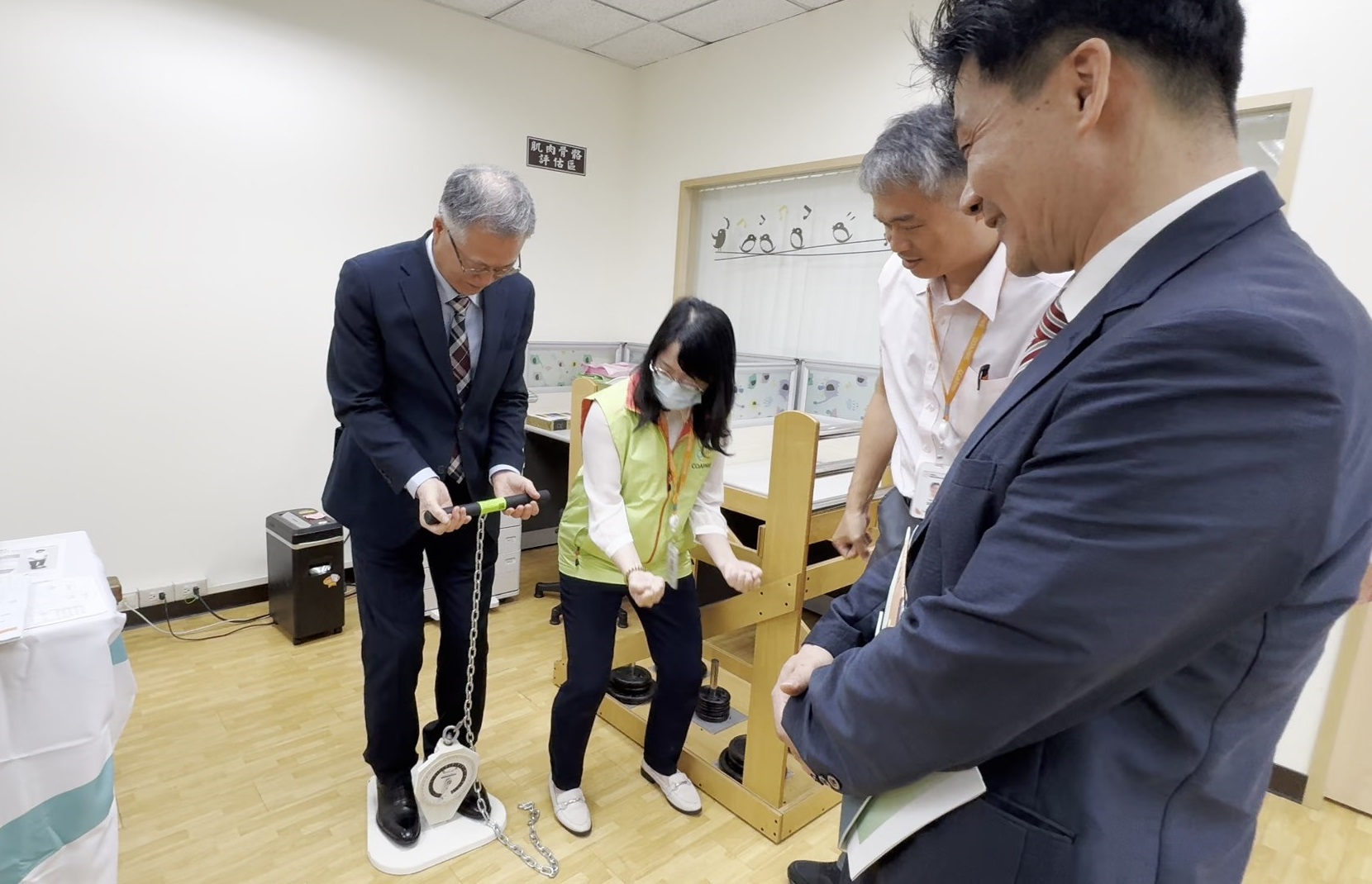
KOSHA President Jong Ju Ahn tests pulling strength with the back muscle dynamometer